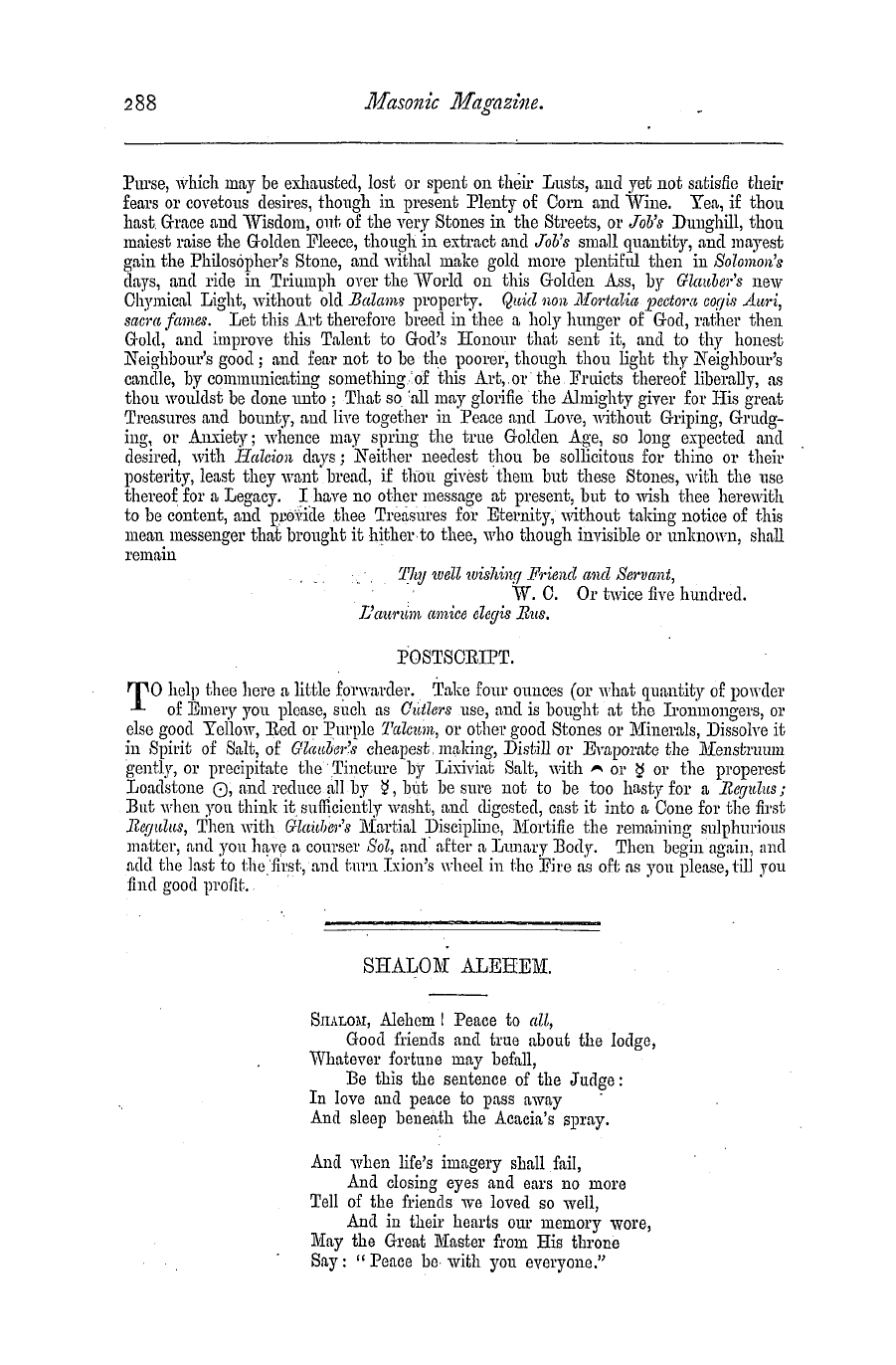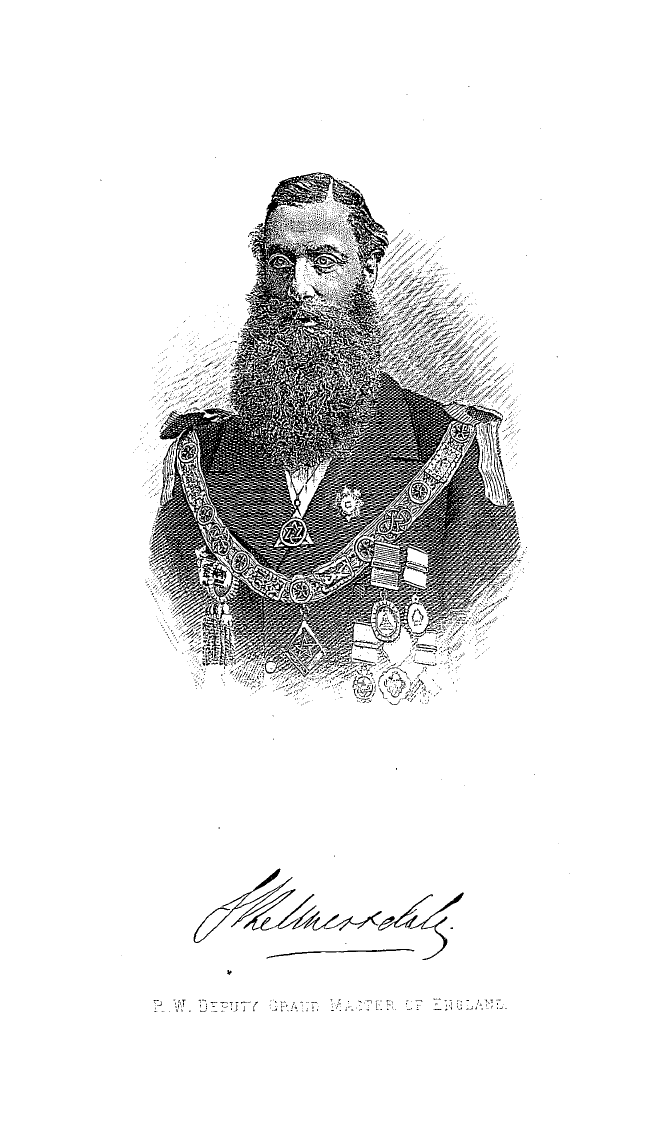-
Articles/Ads
Article THE ANGLO-SAXON LANGUAGE. ← Page 2 of 3 →
Note: This text has been automatically extracted via Optical Character Recognition (OCR) software.
The Anglo-Saxon Language.
and the lectureship lapsed . At Oxford there has been a succession of Anglo-Saxon Professors for nearly a century , yet Cambridge has also had her students . We may point to the name of John Mitchell Kemble , of Trinity College , whose famous essay on the old English Runes attracted so much attention some forty years ago . The story is briefly this : The cross or stone pillar at Ruthwell , near Gretna-green , has inscriptions on all four sides and some sculptured designs . Some of the inscriptions are in
Latin and present no difficulty ; they refer to various scenes in the life of Christ , as exhibited in the sculptures . But the characters on the northern and southern sides are Runic , and the language in which they were written was unknown . Many attempts were made to decipher these ; they were , gross failures , because the language was supposed to be a kind of Pictish or Danish . Li 1840 , Kemble explained the whole matter ; he showed that the language was Englishdiscussed the Runic alphabetsand
, , transcribed and translated the whole inscription . His interpretation was at once seen to be correct . Two } 7 ears afterwards , his attention was drawn to a poem which had been printedfrom an Anglo-Saxon MS . found at Vercelli , in the Milanese district ; and discovered to his surprise and delight , that this poem—The Dream of the Holy Rood—contained the very passage which he had deciphered on the cross . This was a triumphant verification ; indeed , he found that he had only to correct about three
letters in his transcription . It is a lesson as to the value of patience and careful accuracy . A new method of the study of Anglo-Saxon dates from about this period . Previously little attention had been paid to the vowel sounds . Kemble took occasion to call attention to the great results obtained in Grimm ' s Deutsche Grammatik , remarking that 'the roots of the Teutonic languages , their methods of declension , conjugation , and derivationare common to them all ; while each languageaccording to fixed laws
, , of its own , differences the common element . ' It follows that any one of the Teutonic languages may throw light upon an obscure form in any other . But we may boldly extend this principle to all the languages of the Indo-European group . Perhaps this principle has not yet been carried out with sufficient thoroughness . AVe are accustomed
to turn to Sanscrit , Greek , and Latin for assistance in English ; but we are not enough in the habit of reversing tho process , and seeking for assistance from the Teutonic tongues when investigating Latin aud Greek . To some extent this has been done ; we find Gothic duly recognised in Schleicher ' s Compendium . But the remains of Gothic are scanty , and we ought to seek for further help . Next to Gothic , Anglo-Saxon claims the second place ; our old English records are abundant and various , and the
history of the language sufficiently well known . The chief thing for a student to learn is that he should appreciate the letter-changes necessary for transposing words from one language to another . AVhen these are known , analogies are perceived which are of the highest interest . AA e can thus link together words which appear to be very dissimilar . By way of example , we may observe that such words as Billiter ( the word preserved in Billiter-lane , London ) , chyme and chyle , fusion , and the Icelandic geyser ,
all contain the same root . This root is ghu , to pour . The Greek represents the gh by the letter chi , and gives the verbs chimin and cheein , to pour , with their derivatives chyle and chyme in use in English .. In Latin , the gh of ghu became f , producing fu . This was extended to fud , appearing in the past tense fudi of fundere , to pour ; whence the English fuse , fusion , futile , as well as foundry , a word which , came to us through the French . In Icelandic the initial h became a simple and bthe addition of ' s '
g g ; y was formed the root gus , to pour , represented in English by the Scandinavian word gush . A geyser is simply ' a gusher , ' and is equivalent to fountain , derived from the Latin fu above mentioned . Turning to Billiter-lane , we shall still find the same root . The Latin fud becomes gut in Gothic , and gives the Anglo-Saxon geOtan , to pour , whence the middle-English yeten , to pour , to fuse metals . Hence was formed belleyeterthat isa bell-founderand Billiter-lane is Belle-yeter's-lanethe lane where the
, , ; , bell-founders lived , as is well ascertained . In this word , nothing but the short vowel 'i' is left of the original root . These results could never have been guessed .. They are worked out in accordance with known phonetic laws , and they prove the futility of guess-work , I may remark that the verb yet , to pour , is still found in provincial
Note: This text has been automatically extracted via Optical Character Recognition (OCR) software.
The Anglo-Saxon Language.
and the lectureship lapsed . At Oxford there has been a succession of Anglo-Saxon Professors for nearly a century , yet Cambridge has also had her students . We may point to the name of John Mitchell Kemble , of Trinity College , whose famous essay on the old English Runes attracted so much attention some forty years ago . The story is briefly this : The cross or stone pillar at Ruthwell , near Gretna-green , has inscriptions on all four sides and some sculptured designs . Some of the inscriptions are in
Latin and present no difficulty ; they refer to various scenes in the life of Christ , as exhibited in the sculptures . But the characters on the northern and southern sides are Runic , and the language in which they were written was unknown . Many attempts were made to decipher these ; they were , gross failures , because the language was supposed to be a kind of Pictish or Danish . Li 1840 , Kemble explained the whole matter ; he showed that the language was Englishdiscussed the Runic alphabetsand
, , transcribed and translated the whole inscription . His interpretation was at once seen to be correct . Two } 7 ears afterwards , his attention was drawn to a poem which had been printedfrom an Anglo-Saxon MS . found at Vercelli , in the Milanese district ; and discovered to his surprise and delight , that this poem—The Dream of the Holy Rood—contained the very passage which he had deciphered on the cross . This was a triumphant verification ; indeed , he found that he had only to correct about three
letters in his transcription . It is a lesson as to the value of patience and careful accuracy . A new method of the study of Anglo-Saxon dates from about this period . Previously little attention had been paid to the vowel sounds . Kemble took occasion to call attention to the great results obtained in Grimm ' s Deutsche Grammatik , remarking that 'the roots of the Teutonic languages , their methods of declension , conjugation , and derivationare common to them all ; while each languageaccording to fixed laws
, , of its own , differences the common element . ' It follows that any one of the Teutonic languages may throw light upon an obscure form in any other . But we may boldly extend this principle to all the languages of the Indo-European group . Perhaps this principle has not yet been carried out with sufficient thoroughness . AVe are accustomed
to turn to Sanscrit , Greek , and Latin for assistance in English ; but we are not enough in the habit of reversing tho process , and seeking for assistance from the Teutonic tongues when investigating Latin aud Greek . To some extent this has been done ; we find Gothic duly recognised in Schleicher ' s Compendium . But the remains of Gothic are scanty , and we ought to seek for further help . Next to Gothic , Anglo-Saxon claims the second place ; our old English records are abundant and various , and the
history of the language sufficiently well known . The chief thing for a student to learn is that he should appreciate the letter-changes necessary for transposing words from one language to another . AVhen these are known , analogies are perceived which are of the highest interest . AA e can thus link together words which appear to be very dissimilar . By way of example , we may observe that such words as Billiter ( the word preserved in Billiter-lane , London ) , chyme and chyle , fusion , and the Icelandic geyser ,
all contain the same root . This root is ghu , to pour . The Greek represents the gh by the letter chi , and gives the verbs chimin and cheein , to pour , with their derivatives chyle and chyme in use in English .. In Latin , the gh of ghu became f , producing fu . This was extended to fud , appearing in the past tense fudi of fundere , to pour ; whence the English fuse , fusion , futile , as well as foundry , a word which , came to us through the French . In Icelandic the initial h became a simple and bthe addition of ' s '
g g ; y was formed the root gus , to pour , represented in English by the Scandinavian word gush . A geyser is simply ' a gusher , ' and is equivalent to fountain , derived from the Latin fu above mentioned . Turning to Billiter-lane , we shall still find the same root . The Latin fud becomes gut in Gothic , and gives the Anglo-Saxon geOtan , to pour , whence the middle-English yeten , to pour , to fuse metals . Hence was formed belleyeterthat isa bell-founderand Billiter-lane is Belle-yeter's-lanethe lane where the
, , ; , bell-founders lived , as is well ascertained . In this word , nothing but the short vowel 'i' is left of the original root . These results could never have been guessed .. They are worked out in accordance with known phonetic laws , and they prove the futility of guess-work , I may remark that the verb yet , to pour , is still found in provincial
















































